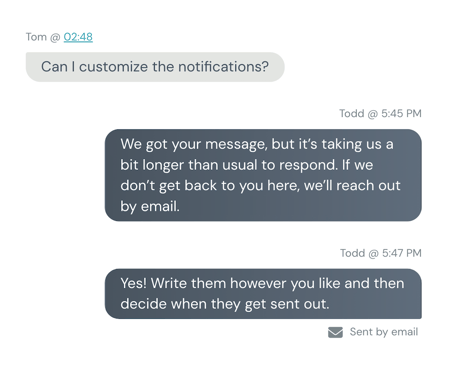With so many different types of live events, it can be tricky to figure out which category they fall into. This leads to people erroneously using terms interchangeably when two different formats — like webinars and webcasts — actually have many differences between them.
This guide will go over the key differences between each type of online event, which one you should use, how to attract more virtual attendees, and how to get the most out of your webinar or webcast through the power of automation.
Let's dive in!
TL;DR
-
The difference between the two forms of virtual events — webcast vs webinar — is that webinars are usually more interactive with audience engagement features while webcasts host larger audiences but with almost no interaction or communication.
-
Virtual events is an umbrella term that could include webinars, webcasts, conferences, and many other online formats.
-
Interactive presentations can engage larger audiences while maintaining the two-way communication of 1-on-1 meetings.
-
Automating a webinar or webcast can increase attendance, drive more conversions, and save you time.
Webinar vs Webcast
A webinar is a "web-based seminar" while a webcast is a "web-based broadcast." Unlike webinars, webcasts are usually just broadcasted by the host without any audience engagement. There are usually fewer webinar participants than webcast audience members.
What is a webinar
A webinar is a virtual event presented by one or more hosts and attended by an online audience.
Webinar goals include lead generation, trial signups, onboarding/training, and countless other use cases. If you have a narrow target audience and want to focus on conversions — such as booked calls, sales, or signups — then webinars are the better choice.
A speaker might also host a webinar to sell products to a wider audience.
What is a webcast
A webcast is a virtual or physical event being streamed to a larger audience.
Examples of webcast use cases include book launches, expert panels, or sporting events — with the latter usually charging on a pay-per-view basis. If mass-market knowledge sharing is your goal then webcast pros will tell you that it's the best format to maximize your reach.
What about virtual events
"Virtual event" is an umbrella term that encompasses both webinars and webcasts. A virtual event is just online attendees engaging with the presentation through the web rather than a physical location. As such, all webinars/webcasts are virtual events but not vice versa.
The term virtual conference is also used to describe the digital version of an in-person live event.
Popular virtual conferences include:
-
SaaStr Annual
-
Product Drive (by Userpilot)
-
MozCon
-
LevelUp (by ClickUp)
-
Elevate (by monday.com)
Want to experience a virtual conference for yourself? Watch our CEO’s Product Drive talk on Finding PMF and Why the Blue Ocean isn't a Good Thing!
Can you automate webinars and webcasts?
Because webcasts are usually structured with a one-way flow, they're actually quite easy to automate as all you have to do is host the video of it somewhere and create a registration form. On the other hand, webinars typically utilize two-way communication.
This means that automating webinars involves more steps but leads to a bigger payoff (since engaged attendees convert much better than passive viewers).
Why should you automate a webinar or webcast?
There are a few benefits to automating your webinar/webcast:
-
Increased attendance. When webinars and webcasts are run on a recurring schedule — or even available on-demand — your audience will have more opportunities to attend them. This eliminates any scheduling conflicts and increases attendance.
-
Higher conversion. Because automated webinars can utilize virtual audience engagement features like live chat and interactions, they tend to have higher conversion rates. One of our customers got a 136x ROI in their first six weeks using eWebinar to automate their presentation.
-
Saved time. Instead of hosting the same presentation over and over again, you could record the presentation once then let people watch it for months or years to come. In addition to making $27,000 in six weeks, the aforementioned customer also saved 70 hours over the same time period.
Conclusion
Technology has come a long way from barely being able to handle screen sharing during 1-on-1 virtual meetings to now being able to reach thousands of people through automated content delivery systems. As a result, you get an evergreen source of large-audience participation from a pre-recorded video.
Automating webinars and webcasts lets you turn one-time events into reusable assets that continue to generate conversions on autopilot for years to come. To experience the interactivity of an automated webinar firsthand, click the card below!










